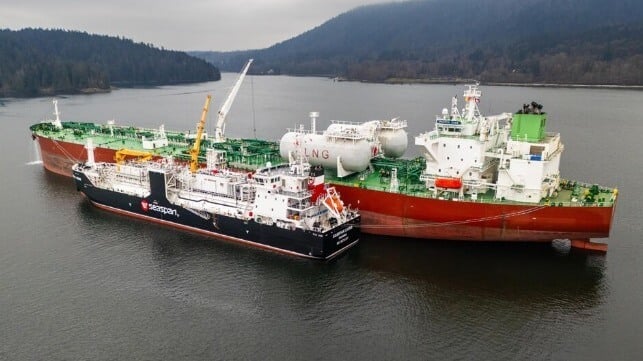EU’s New Ban on Russian LNG Sparks Shift to Innovative Ship-to-Ship Transfer Methods
After more then three years of conflict in Ukraine, the European Union has finaly taken a important step by halting the transfer of Russian liquefied natural gas (LNG) through its terminals.Ukrainian leaders have long urged the EU to reduce its reliance on Russian gas,but consensus in brussels has been slow and inconsistent. The new transshipment ban, which kicks in today, represents a compromise reached during the 14th round of sanctions against russia announced back in June 2024.
Despite this ban, many EU countries continue to funnel substantial amounts of money into Russia for LNG sourced from projects like Yamal. In fact, last year alone saw Russia exporting a record-breaking 16.65 million tonnes of liquefied gas to Europe—bringing in over $8 billion! Other notable sources include the Portovaya and Cryogas Vysotsk terminals located in the Baltic Sea.
Interestingly enough,some European nations are spending far more on Russian LNG than they contribute to Ukraine’s defense efforts. This ongoing trade not only bolsters Russia’s federal budget but also funds its military operations abroad.With this newly implemented transshipment ban targeting about 20% of Russian LNG entering EU ports, key hubs like Zeebrugge in Belgium and Montoir in France have committed to compliance. Back when fluxys’ Zeebrugge terminal inked a deal with Yamal LNG for up to 8 million tonnes per year back in 2015, it seemed like a win-win; now it’s part of an evolving landscape.
In recent months alone, Yamal managed to transship around 3.3 million tonnes at these terminals—2.5 million at Zeebrugge and the rest at Montoir—using specialized ice-capable Arc7 carriers designed for such operations.
The real question is how effective this ban will be moving forward. Some analysts believe that rather of being redirected elsewhere as intended, some volumes may simply flood into Europe’s spot market—a trend already evident as spot sales jumped from 23% to an impressive 33% last year.
Meanwhile, Novatek—the majority owner behind Yamal LNG—is adapting by shifting their transshipment activities from Zeebrugge to Kildin Island near Murmansk. They’ve ramped up ship-to-ship operations significantly; typically seeing about twelve transfers annually could easily double or triple by next year based on current trends.
Just last November alone saw three transfers take place at Kildin Island; December followed with four more—and already eleven transfers have occurred ther just within January and February! These ship-to-ship maneuvers require meticulous coordination between vessels and can take around thirty-six hours each time they’re executed.
To facilitate these operations further,Novatek has been busy acquiring new LNG carriers too! Three vessels ordered from South Korea’s hanwha are now operational after entering service earlier this quarter—with another one set for launch soon after that! These North-series ships—North Moon,North ocean,North Light—and North Valley are all under Novatek’s control via charter agreements and are actively supporting those crucial ship-to-ship transfers at Kildin Island right now!
As we look ahead toward Asia-bound deliveries (like those recently made by North Light),it’s clear that while regulations tighten within Europe regarding Russian energy imports—the game is far from over as option routes emerge across global markets.


Comments are closed, but trackbacks and pingbacks are open.